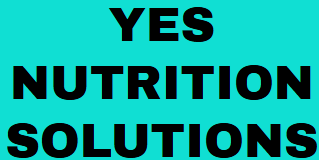Understanding Gender Identity
Understanding how gender identity shapes an individual’s experience is crucial for fostering inclusivity and respect in our society. Gender identity refers to a person’s internal sense of their own gender, which may or may not align with the sex they were assigned at birth.
What is gender identity?
Understanding gender identity is fundamental to respecting individuals and creating an inclusive environment. Gender identity is an individual’s deeply held understanding of themselves as male, female, a blend of both, or neither. This internal sense of gender may or may not correspond with the sex assigned at birth.
Different gender identities
There are many different ways people understand and express their gender identity. Some common gender identities include:
cisgender, transgender, non-binary, genderfluid, agender, bigender, and intersex. It is important to remember that these are just a few examples, and there are many other ways people may identify.
Using the correct pronouns for someone is a fundamental way to show respect for their gender identity.
The Importance of Using Correct Pronouns
Using the correct pronouns for someone is essential in creating a respectful and inclusive environment. Pronouns, such as he/him, she/her, they/them, or other variations, reflect an individual’s gender identity. By using the pronouns that align with a person’s self-identified gender, we acknowledge their identity and demonstrate respect for who they are.
Respect and dignity
Using the correct pronouns for someone is a fundamental way to show respect for their gender identity. Pronouns, such as he/him, she/her, they/them, or other variations, reflect an individual’s gender identity. By using the pronouns that align with a person’s self-identified gender, we acknowledge their identity and demonstrate respect for who they are.
When someone shares their preferred pronouns, it is important to listen attentively and make a conscious effort to use them consistently.

- Misgendering someone, which occurs when you use pronouns that do not align with their gender identity, can be deeply hurtful and invalidating. It can make individuals feel unseen, disrespected, and marginalized.
- Making a mistake in pronouns is understandable, but it’s important to correct yourself politely and sincerely.
- If you are unsure of someone’s pronouns, it is always respectful to ask. You can say something like, “What pronouns do you use?”
Creating an inclusive environment

Understanding how gender identity shapes an individual’s experience is crucial for fostering inclusivity and respect in our society. Gender identity refers to a person’s internal sense of their own gender, which may or may not align with the sex they were assigned at birth.
Using the correct pronouns for someone is a fundamental way to show respect for their gender identity. Pronouns, such as he/him, she/her, they/them, or other variations, reflect an individual’s gender identity. By using the pronouns that align with a person’s self-identified gender, we acknowledge their identity and demonstrate respect for who they are.
When someone shares their preferred pronouns, it is important to listen attentively and make a conscious effort to use them consistently. Misgendering someone, which occurs when you use pronouns that do not align with their gender identity, can be deeply hurtful and invalidating. It can make individuals feel unseen, disrespected, and marginalized.
Making a mistake in pronouns is understandable, but it’s important to correct yourself politely and sincerely. If you are unsure of someone’s pronouns, it is always respectful to ask. You can say something like, “What pronouns do you use?”
Avoiding misgendering and its impact
Using the correct pronouns for someone is a fundamental way to show respect for their gender identity. Pronouns, such as he/him, she/her, they/them, or other variations, reflect an individual’s gender identity. By using the pronouns that align with a person’s self-identified gender, we acknowledge their identity and demonstrate respect for who they are.
When someone shares their preferred pronouns, it is important to listen attentively and make a conscious effort to use them consistently.
Misgendering someone, which occurs when you use pronouns that do not align with their gender identity, can be deeply hurtful and invalidating. It can make individuals feel unseen, disrespected, and marginalized.
Making a mistake in pronouns is understandable, but it’s important to correct yourself politely and sincerely. If you are unsure of someone’s pronouns, it is always respectful to ask. You can say something like, “What pronouns do you use?”
How to Determine Someone’s Pronouns
Determining someone’s pronouns is a simple yet powerful way to demonstrate respect for their gender identity. Understanding that pronouns reflect an individual’s internal sense of self is crucial in fostering inclusivity and creating a welcoming environment.
Asking respectfully
Determining someone’s pronouns can be as simple as asking respectfully. When meeting someone new, you could say something like, “What pronouns do you use?” This direct approach shows that you value their identity and are willing to make an effort to use the correct pronouns.
If someone has already shared their pronouns, it’s important to remember them and use them consistently. Making a conscious effort to use the right pronouns demonstrates respect and creates a more inclusive environment.
Remember that everyone deserves to be addressed with respect, regardless of their gender identity.
Observing social cues
Determining someone’s pronouns is a simple yet powerful way to demonstrate respect for their gender identity. Understanding that pronouns reflect an individual’s internal sense of self is crucial in fostering inclusivity and creating a welcoming environment.
When interacting with someone for the first time, it’s perfectly acceptable to politely ask about their preferred pronouns.
- You could say something like, “What pronouns do you use?”
- “My pronouns are she/her.” or “He/him”
Pay attention to how someone introduces themselves. They may include their pronouns in their self-introduction.
If unsure, err on the side of using gender-neutral pronouns like they/them until you have been given specific information. This approach demonstrates respect while ensuring inclusivity.
Using pronoun tags in written communication
Determining someone’s pronouns is a simple yet powerful way to demonstrate respect for their gender identity. Understanding that pronouns reflect an individual’s internal sense of self is crucial in fostering inclusivity and creating a welcoming environment.
When interacting with someone for the first time, it’s perfectly acceptable to politely ask about their preferred pronouns.
- You could say something like, “What pronouns do you use?”
- “My pronouns are she/her.” or “He/him”
Pay attention to how someone introduces themselves. They may include their pronouns in their self-introduction.
If unsure, err on the side of using gender-neutral pronouns like they/them until you have been given specific information. This approach demonstrates respect while ensuring inclusivity.
Common Pronouns and their Meanings
Pronouns are words used to replace nouns in a sentence, and they play a crucial role in understanding and respecting an individual’s gender identity. Common pronouns include he/him, she/her, they/them, and others.
He/him/his
Pronouns are words used to replace nouns in a sentence, and they play a crucial role in understanding and respecting an individual’s gender identity. Common pronouns include he/him, she/her, they/them, and others.
He/him/his are pronouns used to refer to a person whose gender identity is male.
- When referring to a person who uses he/him/his pronouns, use these terms consistently in your speech and writing.
- For example, you might say, “John went to the store” or “He bought some groceries.”
She/her/hers
She/her/hers are pronouns used to refer to a person whose gender identity is female.
When referring to a person who uses she/her/hers pronouns, use these terms consistently in your speech and writing.
For example, you might say, “Sarah went to the concert” or “She had a great time.”
They/them/theirs
They/them/theirs are gender-neutral pronouns used to refer to a person whose gender identity is not exclusively male or female.
Using they/them/theirs for someone who identifies as non-binary, genderfluid, agender, or any other gender identity outside the male/female binary is crucial for respecting their identity.
For example, you might say, “My friend Alex went to the movies” or “They enjoyed the film.”
Other pronouns (e.g., xe/xem/xyr)
Common pronouns include he/him/his, she/her/hers, and they/them/theirs. These pronouns are used to replace nouns in a sentence, helping us communicate effectively while respecting an individual’s gender identity.
In addition to these common pronouns, there are other options gaining recognition and acceptance within the language. Some examples include xe/xem/xyr, ey/em/eir, and fae/faer/faers. These alternative pronouns reflect the diversity of gender identities and provide individuals with more accurate and inclusive ways to express themselves.

It’s important to remember that pronouns are a fundamental aspect of someone’s identity and using the correct pronouns for an individual shows respect and understanding. When in doubt, it’s always appropriate to politely ask someone about their preferred pronouns.
Making Mistakes and Correcting Them Gracefully
Making mistakes is inevitable, but how we handle them can greatly impact our relationships and create a more respectful environment. When we unintentionally misgender someone, it’s crucial to acknowledge the error gracefully.
Recognizing your error
Making mistakes is inevitable, but how we handle them can greatly impact our relationships and create a more respectful environment. When we unintentionally misgender someone, it’s crucial to acknowledge the error gracefully. The most important thing is to sincerely apologize and correct yourself. Avoid making excuses or trying to justify the mistake. A simple “I apologize, my pronouns got mixed up. Can you remind me what you use?” shows that you value their identity and are willing to learn.
Remember, correcting yourself in a sincere and respectful manner demonstrates your commitment to creating an inclusive space for everyone. It also shows the individual that you care about their well-being and are making a conscious effort to use language that aligns with their gender identity.
Apologizing sincerely
Making mistakes is inevitable, but how we handle them can greatly impact our relationships and create a more respectful environment.
When we unintentionally misgender someone, it’s crucial to acknowledge the error gracefully.
The most important thing is to sincerely apologize and correct yourself. Avoid making excuses or trying to justify the mistake.
A simple “I apologize, my pronouns got mixed up. Can you remind me what you use?” shows that you value their identity and are willing to learn.
Remember, correcting yourself in a sincere and respectful manner demonstrates your commitment to creating an inclusive space for everyone. It also shows the individual that you care about their well-being and are making a conscious effort to use language that aligns with their gender identity.
Moving forward respectfully
Making mistakes is inevitable, but how we handle them can greatly impact our relationships and create a more respectful environment. When we unintentionally misgender someone, it’s crucial to acknowledge the error gracefully.
The most important thing is to sincerely apologize and correct yourself. Avoid making excuses or trying to justify the mistake.
A simple “I apologize, my pronouns got mixed up. Can you remind me what you use?” shows that you value their identity and are willing to learn.
Remember, correcting yourself in a sincere and respectful manner demonstrates your commitment to creating an inclusive space for everyone. It also shows the individual that you care about their well-being and are making a conscious effort to use language that aligns with their gender identity.
Understanding how gender identity shapes an individual’s experience is crucial for fostering inclusivity and respect in our society. Gender identity refers to a person’s internal sense of their own gender, which may or may not align with the sex they were assigned at birth.
Using the correct pronouns for someone is a fundamental way to show respect for their gender identity. Pronouns, such as he/him, she/her, they/them, or other variations, reflect an individual’s gender identity. By using the pronouns that align with a person’s self-identified gender, we acknowledge their identity and demonstrate respect for who they are.
When someone shares their preferred pronouns, it is important to listen attentively and make a conscious effort to use them consistently. Misgendering someone, which occurs when you use pronouns that do not align with their gender identity, can be deeply hurtful and invalidating. It can make individuals feel unseen, disrespected, and marginalized.
Making a mistake in pronouns is understandable, but it’s important to correct yourself politely and sincerely. If you are unsure of someone’s pronouns, it is always respectful to ask. You can say something like, “What pronouns do you use?”
Resources for Further Learning
For those seeking further information and resources on gender identity and inclusive language, here are some valuable sources:
Shop for Travel-Friendly Vibrators with Discreet Designs
Get Realistic Vibrators Designed for Ultimate Comfort
Discover Vibrators with Vibrant Colors and Textures
Find Reliable Bullet Vibrators for Long-Term Use
Shop Bluetooth-Controlled Vibrators for Innovative Play
Shop Premium-Quality Luxury Vibrators Today
Get the Perfect Cordless Vibrators Delivered
Find Rechargeable Waterproof Vibrators at Low Prices
Fashionably Balanced
Grace Suh Therapy
- Sculptra Surrey – Collagen Stimulation Therapy Near Shepperton, Surrey - November 3, 2025
- Sculptra Surrey – Collagen Stimulation Therapy Near Dunsfold, Surrey - November 1, 2025
- Retinol Peel Near Tatsfield, Surrey - October 30, 2025
